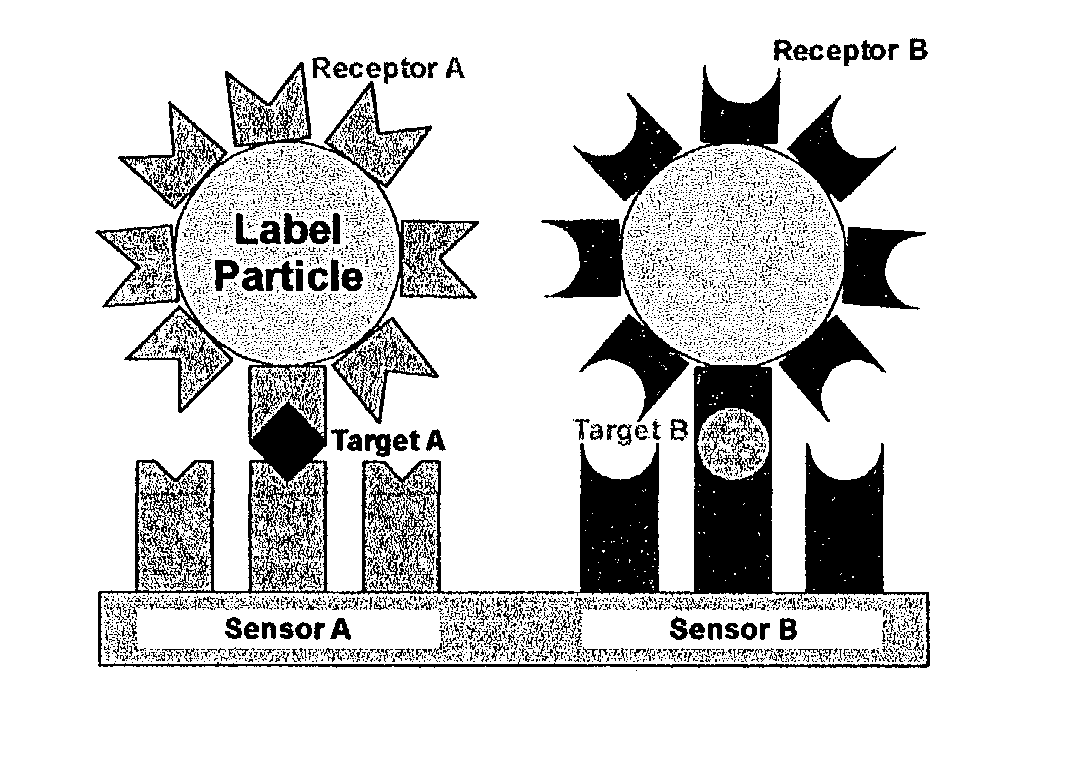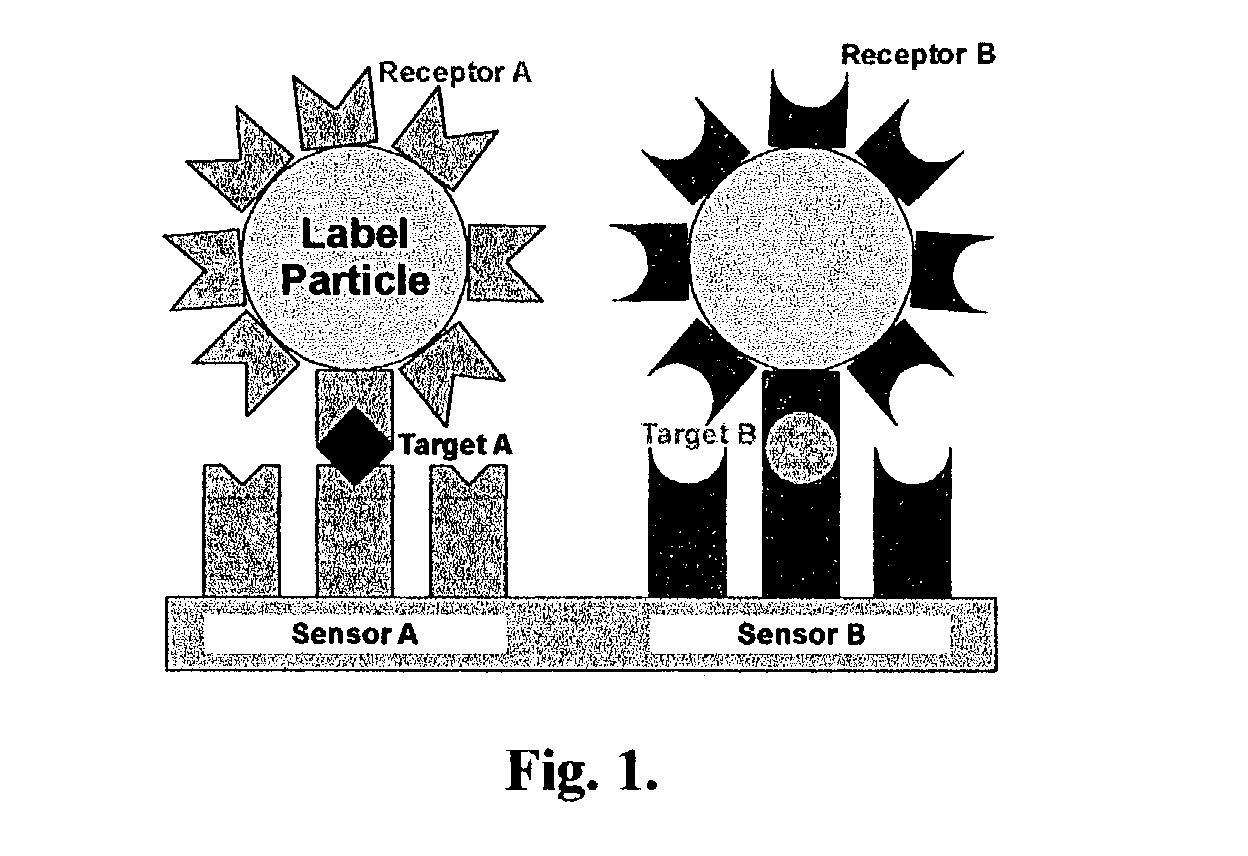Fluidic force discrimination
a technology of fluidic force and discrimination, which is applied in the field of fluidic force discrimination, can solve the problems of only generating forces in the .about.1 pn range of paramagnetic particles, and removing smaller particles with greater difficulty
- Summary
- Abstract
- Description
- Claims
- Application Information
AI Technical Summary
Problems solved by technology
Method used
Image
Examples
Embodiment Construction
[0031] Given a large enough flow rate or bead diameter, or a short enough molecular tether, FFD in principle can generate enough force to break any chemical bond. In most practical applications, FFD can be used to identify or separate according to the required rupture force populations of molecules bound to a surface by a plurality of different bond strengths as long as the difference in the binding strengths is larger than variations in the force-times-barrier lengths. Force variations would include those caused by roughness or shadowing of flow across one bead by a nearby upstream bead. For molecules with dissociation energetics that include multiple potential energy wells, such as many biological macromolecules, FFD using pulsed flow could potentially remove a relatively greater number of more weakly bound micro-particle labels than strongly bound ones because of the relatively longer times required to cross multiple energy barriers. FFD could also be used as a step in preparing ...
PUM
 Login to View More
Login to View More Abstract
Description
Claims
Application Information
 Login to View More
Login to View More - R&D
- Intellectual Property
- Life Sciences
- Materials
- Tech Scout
- Unparalleled Data Quality
- Higher Quality Content
- 60% Fewer Hallucinations
Browse by: Latest US Patents, China's latest patents, Technical Efficacy Thesaurus, Application Domain, Technology Topic, Popular Technical Reports.
© 2025 PatSnap. All rights reserved.Legal|Privacy policy|Modern Slavery Act Transparency Statement|Sitemap|About US| Contact US: help@patsnap.com



